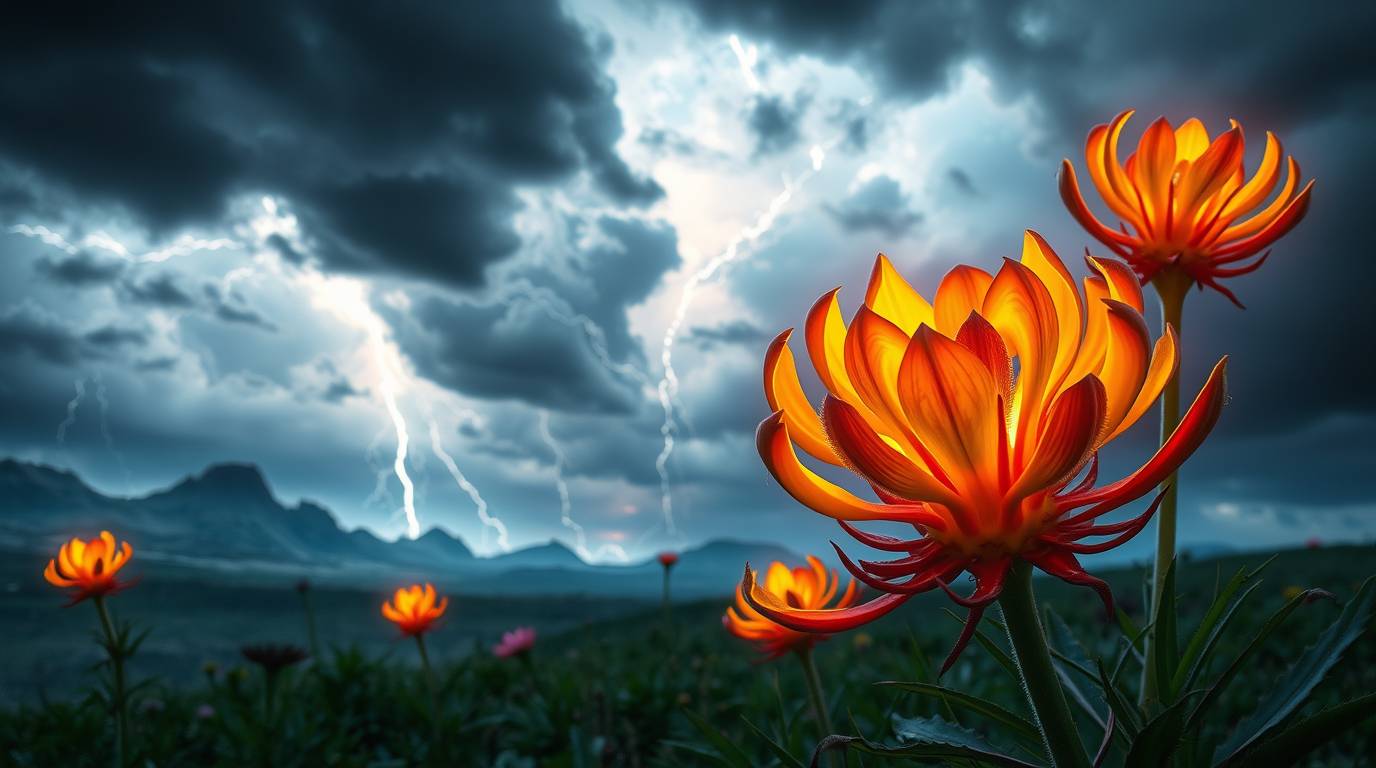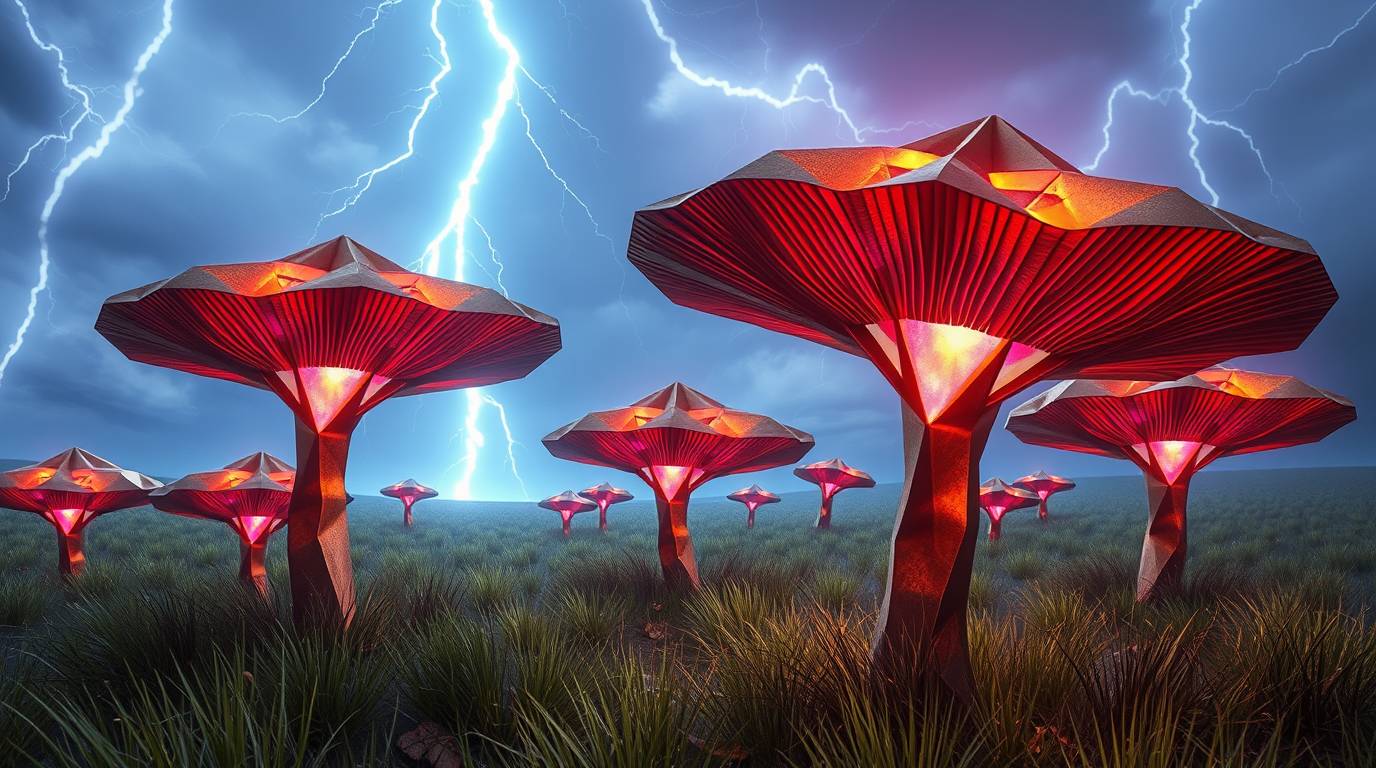Mistleflower
Mistleflower is a species of low growing plant which can be found in two varieties, in the northern wilds of Tinturbean and on the punished plains of northern Myruthea.
Basic Information
Anatomy
The plant is low growing, seldom exceeding a quarter of a metre in height. The leaves are pinnate with small dark green leaflets, climbing the stem and a rosette at the base. Below the ground there is a tap root which is usually associated with the stormroot mycellium of the stormcap fungus. A second lateral root system propagates the plant with a suckering mechanism.
The bright orange flowers are actinomorphic, with a radiate flower head. In the western variety the petals curve upwards to make a bowl shaped bloom, somewhat reminiscent of a clover flower. The eastern variety has a slightly different morphology, with more but smaller petals arrayed in a flatter head, like a daisy.
Genetics and Reproduction
The plant flowers in early Chiorth and again in Tuzlle, both stormy months in the northern parts of the northern continents. Sexual reproduction by seed is somewhat rare, with most plants propagating via a network of lateral roots, connected to one another and to the symbiotic stormcaps, but pollination does occasionally occur, apparently mediated by moths with the fine seeds spread on the wind.
Ecology and Habitats
Mistleflower inhabits the rocky slopes of the hills and mountains of northern Tinturbean, on cliff tops and in meadow lands. On the continent of Myruthea it grows extensively on the punished plains. It requires open ground, favouring areas subject to frequent storms and it is never found in forests or below a certain latitude, which encompasses about half of Tinturbean and no more than a third of Myruthea.
Additional Information
Uses, Products & Exploitation
The mistleflower is the source of mistleflower oil, an important alchemical reagent which is distilled from the flowers. The plant has never been cultivated successfully but harvesting of the flowers from the wild is easy when they are in season, in early Chiroth and again in Tuzlle.
Geographic Origin and Distribution
The western form of the plant is widespread in the north of Tinturbean. The eastern variety is restricted to the punished plains of Myruthea, but this is an extensive area and within the plains, mistleflower is common.
Symbiotic and Parasitic organisms
Mistleflower has a close symbiotic association with the stormcap fungus that can be found in the same grasslands. The mycelium of the fungus and the roots of the plant, exchange energy with one another, the plant producing sugars and the fungus providing charged energy from sites of lightning strikes and other trace minerals, all of which enhance its growth and contribute to the rich chemistry of the flowers.
Geographic Distribution
Related Materials




Comments